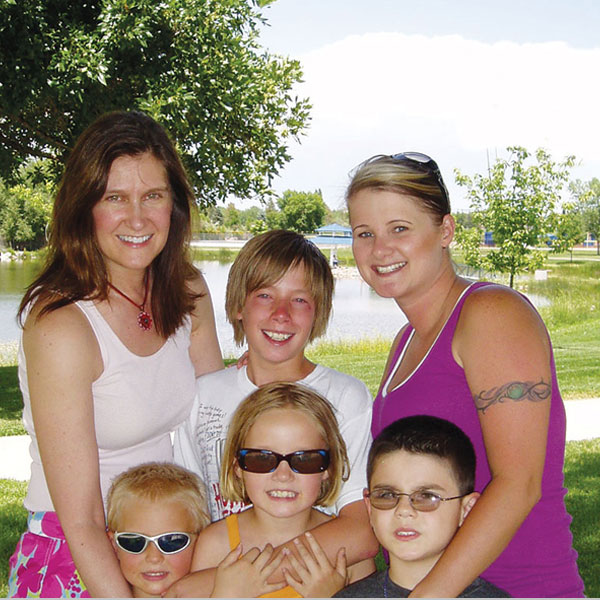My friend, Crystal, invited my four-year-old son, Reed, and six-year-old daughter, Tessa, to play at her house for a few hours. My husband was out of town that week, and some downtime for me sounded really good.
It was a no-brainer, right — responsible babysitter? Free time? But I had to think a moment. Because Crystal is my daughter’s birth mom.
“Is this weird?” I thought. “Other people would probably find it weird. But it doesn’t feel weird.”
Since day one in the birthing room, we’ve embraced Crystal as part of our extended family. At first this was merely because we’d planned a fully open adoption. But by about, oh, day two, it was clear that we’d be friends because we liked each other. Six years into the adoption, Crystal attends birthday parties for both our children, school events, and dance recitals, averaging about one visit a month. But, until now, I’d always been part of the get-togethers.
Was I worried that I’d be usurped as Mom? (No.) Could Crystal handle both my children, in addition to her own? (Yes.) Might my son feel left out? That last question was easily dismissed. Crystal has always shown her love for Reed. In a way, she’s served as a surrogate birth mother for him, since contact with his own has faded. And Reed adores Crystal’s 10-year-old son and three-year-old stepson.
These were my thoughts as I drove the kids to Crystal’s house. I told Tessa and Reed to behave, reminded Crystal that she could call me, no matter what, and left, almost giddy at the open hours ahead of me.
“A new person!”
When I returned to pick up the kids, Crystal had trimmed my daughter’s hair (hairstyling is Crystal’s line of work) and given her a pair of hand-me-down, purple boots. I told them how I spent my blissful hours of solitude (reading and writing), and they told me how they spent their loud hours of togetherness (running through the garden hose and eating). We were all fulfilled.
Now, let me expand a bit on my relationship with Tessa. She and I currently butt heads over everything from too-long showers to homework, from talking on the phone to doing her chores. I’m hoping that we will not revisit this tension during her teen years, because we’ll have already been-there, done-that (please, don’t burst my bubble).
When we got home, Tessa said, “Mom, I’m a new person!” I’m not sure if she meant the new hairstyle, the baptism-by-sprinkler, or what. But for days afterward, the fight in her was gone. The next morning, Tessa wanted to wear the purple boots to kindergarten. I said, “Those shoes are not appropriate for school. You do what you think will get you the consequences you want.” I expected her to wear them to school, which would mean I’d have to throw them away as the logical consequence.
But Tessa came to breakfast, smiling and cheerful, wearing her sneakers. I was so impressed with her out-of-character response that I brought the boots when I picked her up from school, so she could wear them to the dentist (not as inappropriate there).
After her time with Crystal, it’s as if Tessa had been to the well. I realize that our temperaments don’t always align — I’m orderly and analytical. My daughter is mercurial and playful — traits she shares with her birth mom. Maybe spending time with Crystal is, for Tessa, like sinking into a comfortable chair.
Should I feel hurt or threatened by Crystal’s effect on Tessa? Here’s why I’m not: I don’t know how to fix a tooth, but I can take Tessa to Dr. Jill. I don’t like to play house for hours at a time, but I can invite Tessa’s friends for a visit. I can’t teach Tessa gymnastics, but she can take lessons from Miss Amber. And I can’t fill a certain emotional need that Tessa has, but I can take her to the well.



